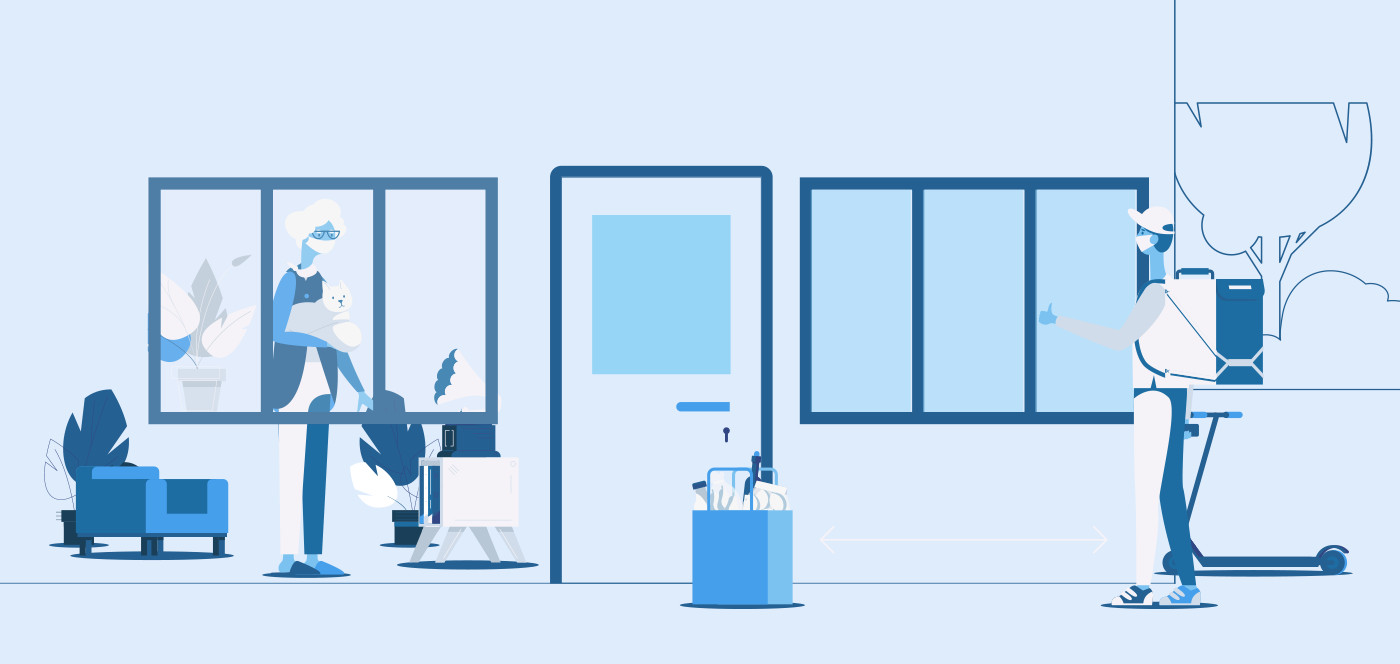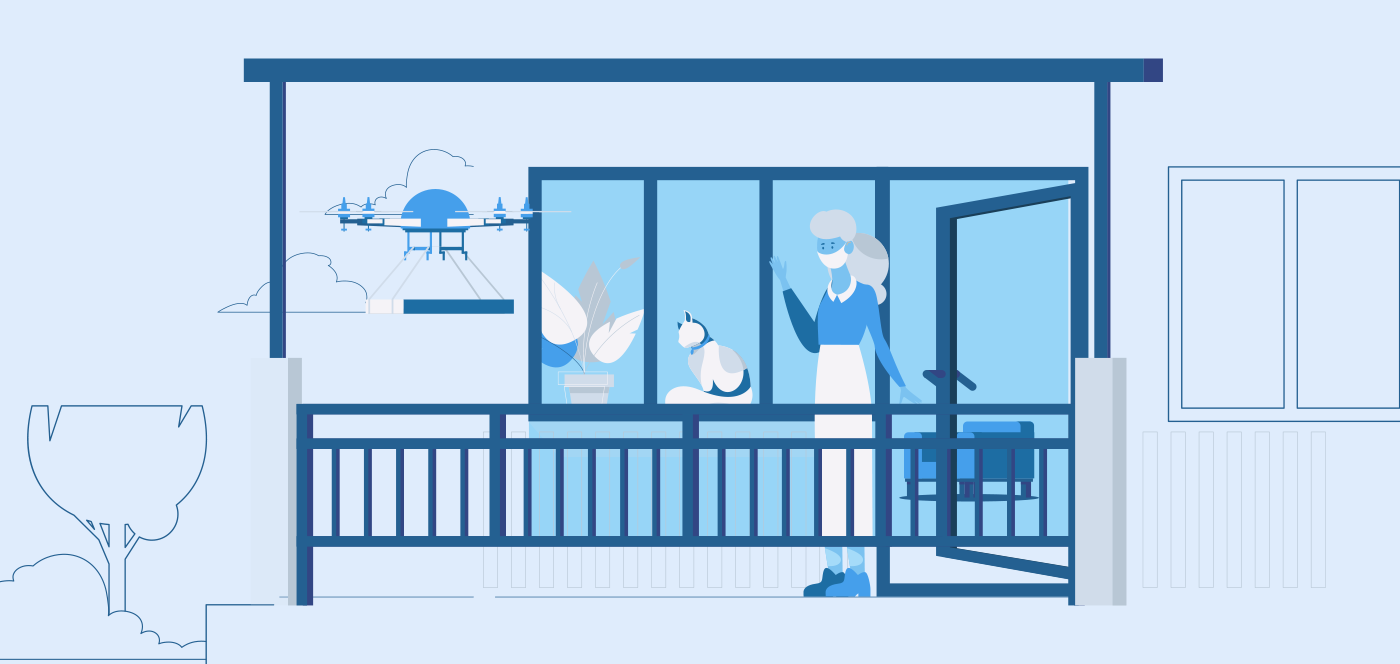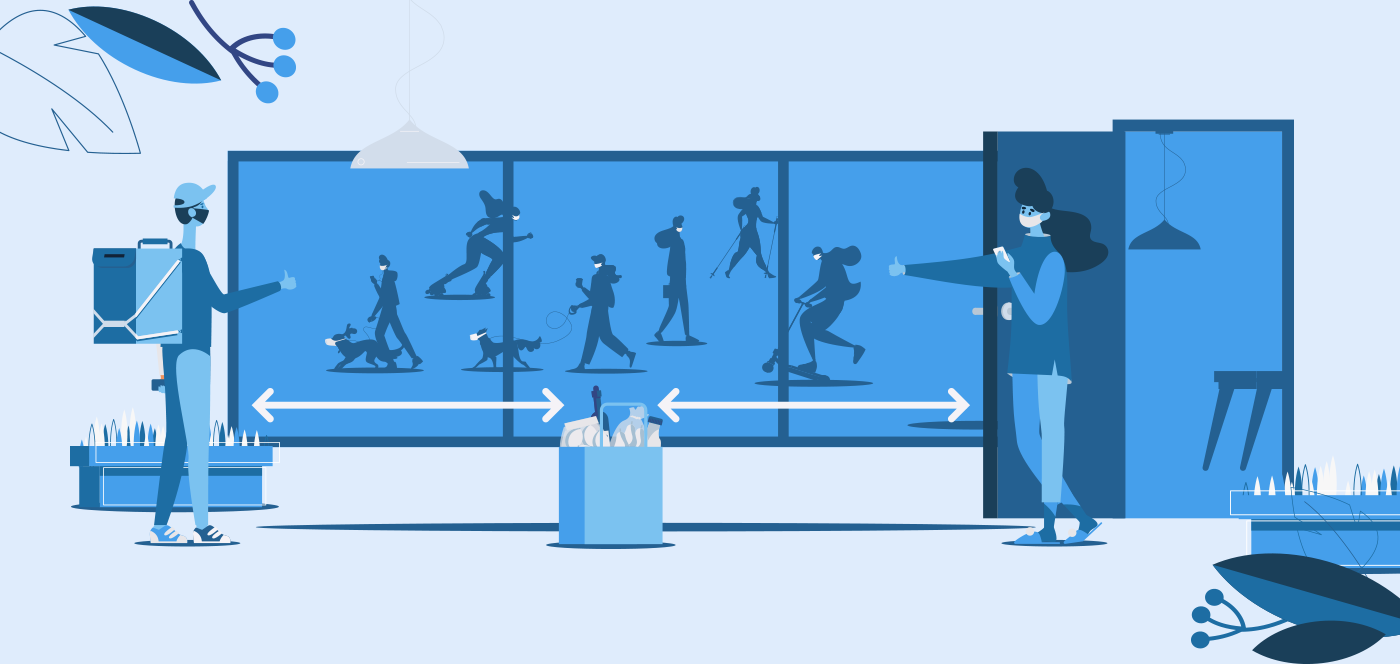“Consumers use their hands to connect with brands.” and “Touch can also create symbolic connections between people and products.” were the main conclusions of a 2011 Harvard Business Review article with the title “Please Touch The Merchandise”, which underlined the importance of touch in sales. Yet, in a COVID-19 world, that idea seems widely inaccurate. Customers today avoid touching anything by any means, apart from their own mobile phone (that are ironically “10 Times Dirtier Than A Toilet Seat”).
What was a harmless everyday practice before, such as touching the gas pump handles and pushing crosswalk buttons, is now a health threat. As a result, retailers around the world are rushing to introduce their way of contactless retail and save their business in these unprecedented times.

The trend was first notices where the virus started: in China. In this market, which was already ahead in terms of companies offering home delivery, food vendors acting on the Government measures were fast to switch to contactless delivery, leaving orders at designated pickup spots, such as at the entrance of a customer’s building or in a locker. Some food vendors even listed the names of the names and body temperature of the people who prepared and delivered the food, in order to assure customers that no one with fever came in contact with the food.
Around the world, Domino’s has taken contactless delivery one step further by introducing custom contactless delivery, which does not only eliminated any contact between you and the pizza delivery person, but also offers custom drop-off points. Customers can choose where they would like their order to be left at the delivery: whether that is by the front door, at a reception desk or on a bench. At the delivery, the delivery person steps away from the pizza, contacts the customer and waits until the order is picked.

Outside of food, retailers selling electronics or furniture are offering curbside pick-up for convenient contactless collection. The concept is gaining on popularity during this period and is very simple: a customer calls in an order, drives to the store, parks outside and an employee brings the goods to the car. The major US electronics retailer Best Buy has gone 100% curbside allowing only employees to enter into their stores. Motoring groups and veterinary clinics are also removing contract with people. For instance, Halfords in the UK has introduced “contactless” car maintenance scheme offering at-home fittings and repair services without their engineers coming into contact with vehicle owners who are self-isolation. Even vet services go contactless. Australia’s Greencross Vets has announced a minimal contact pet care option – pet owners stay in their cars while their pet is picked up and examined in the clinic. When the check-up is over, the owner is informed over the phone about the condition of their pet.
Now cash has become a dirty word, as reportedly the virus lives on hard surfaces for up to 3 days. Hence, the use of cash has dropped dramatically. In the UK, its usage decreased by 50% due to the corona crisis. On the other hand, contactless payment solutions are on the rise and make zero-contact retail possible. In the US, Walmart has activated their app, offering customers a touch-free checkout when they use Walmart Pay.

Naturally, the next step would be taking humans out of the process altogether – robot retail. With companies like Alibaba and JD.com offering delivery with robots, China was the first country to adopt dispatching robots into lockdown areas. The preconditions for this were already met even before the corona crisis, since automation and robots were part of Chinese everyday life, as in hotels run almost entirely by robots.
Finally, the questions is, whether these trends are here to stay even when the crisis settles? Will contactless retail wipe out all other alternatives? We think so, and meanwhile, in the wake of the pandemic, contactless remains the only option. The best way to keep in touch with customers is to reduce “touch” as much as possible.




